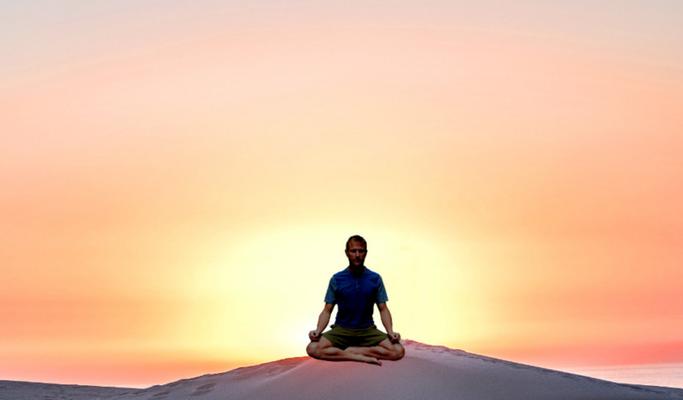Incorporating Deep Relaxation Into Different Meditation Styles

Are you looking to enhance your meditation practice? Discover the power of incorporating deep relaxation into different meditation styles.
In this article, we will explore the benefits of deep relaxation and how it can transform your mindfulness, guided visualization, breath awareness, loving-kindness, and mantra meditation techniques.
By integrating deep relaxation into your practice, you can achieve a deeper state of calm and inner peace.
So, let’s dive in and unlock the full potential of your meditation journey.
Key Takeaways
- Deep relaxation is beneficial in various meditation styles as it reduces stress levels, promotes calmness, and enhances overall well-being.
- Different techniques can be used to incorporate deep relaxation into meditation, such as meditation with calming music, walking meditation, breathing techniques, progressive muscle relaxation, and guided imagery.
- Deep relaxation plays a significant role in mindfulness meditation, improving the overall experience and promoting mental health.
- Breathing techniques for relaxation, including deep diaphragmatic breathing, are effective in calming the mind and body, reducing stress hormones, and improving cognitive function.
The Benefits of Deep Relaxation in Meditation Styles
You’ll love the many benefits of incorporating deep relaxation into different meditation styles.
When exploring relaxation techniques for stress relief, deep relaxation can provide significant benefits. By allowing your body and mind to enter a state of deep relaxation, you can effectively reduce stress levels and promote a sense of calmness and tranquility.
Deep relaxation has a direct connection to improved sleep quality. When you incorporate deep relaxation into your meditation practice, it helps to relax your nervous system, release tension in your muscles, and calm your racing thoughts. As a result, you’ll find it easier to fall asleep and enjoy a more restful and rejuvenating sleep.
Deep relaxation in meditation styles is a powerful tool that can enhance your overall well-being and help you find inner peace.
Exploring Various Meditation Techniques for Deep Relaxation
To achieve a state of deep relaxation, try exploring various meditation techniques.
One technique you can explore is meditation with music. Find calming and soothing music that resonates with you and play it softly in the background during your meditation practice. The gentle melodies and rhythms can help you relax and let go of any tension or stress.
Another technique to consider is incorporating deep relaxation into walking meditation. Instead of sitting still, take a slow and mindful walk in nature. Pay attention to your breath, the sensation of your feet on the ground, and the sounds around you. With each step, allow yourself to release any thoughts or worries, and simply be present in the moment.
How to Incorporate Deep Relaxation in Mindfulness Meditation
Incorporating deep relaxation into your mindfulness meditation practice can greatly enhance your overall experience.
Breathing techniques for relaxation, such as deep diaphragmatic breathing, can help calm your mind and body, allowing you to enter a state of deep relaxation more easily.
Progressive muscle relaxation involves tensing and then releasing different muscle groups, helping you release tension and achieve a deeper sense of relaxation.
Lastly, guided imagery for relaxation uses vivid mental imagery to transport you to a peaceful and calming place, promoting a sense of deep relaxation and tranquility.
Breathing Techniques for Relaxation
Take a moment and focus on your breath, using simple techniques to promote deep relaxation.
Breathing exercises for stress relief play a crucial role in enhancing your mental health and overall well-being.
When you consciously slow down your breath and take deep, intentional breaths, it sends signals to your brain to activate the relaxation response. This response helps to reduce the production of stress hormones and calms your mind and body.
Deep breathing can also increase oxygen flow to your brain, improving cognitive function and concentration.
Regular practice of these breathing exercises can help alleviate symptoms of anxiety, depression, and other mental health conditions.
Progressive Muscle Relaxation
When you practice progressive muscle relaxation, you can effectively release tension and promote a state of deep relaxation in your body. This technique involves tensing and then relaxing each muscle group, one at a time, starting from your toes and moving up to your head.
As you tense each muscle group, you’re allowing it to become aware of the tension it holds. Then, as you relax the muscle group, you’re releasing that tension and allowing a sense of deep relaxation to flow through your body.
Progressive muscle relaxation can be particularly helpful for those struggling with insomnia or difficulty falling asleep. By releasing tension and promoting deep relaxation, this technique can help calm your mind and prepare your body for a restful night’s sleep.
Guided Imagery for Relaxation
Guided imagery for relaxation involves using your imagination to create calming and peaceful mental images that can help you relax your body and reduce stress. It is a simple yet powerful technique that can be practiced anywhere, anytime.
Here are four benefits of incorporating guided imagery into your relaxation routine:
- Stress reduction: Guided imagery allows you to escape from the pressures of daily life and enter a state of deep relaxation. By picturing serene scenes or visualizing yourself in a peaceful environment, you can let go of stress and tension.
- Enhanced focus: This technique helps redirect your attention away from negative thoughts and distractions. By focusing on positive mental images, you can improve concentration and promote a sense of calm.
- Improved sleep: Guided imagery can be particularly helpful for those struggling with insomnia or sleep disturbances. By creating a mental landscape that induces relaxation, you can prepare your mind and body for a restful night’s sleep.
- Emotional well-being: Engaging in guided imagery can evoke positive emotions and promote a sense of overall well-being. By picturing joyful and tranquil scenes, you can uplift your mood and reduce anxiety.
Incorporating guided imagery into your relaxation techniques can provide a powerful tool for stress reduction and promote a sense of inner peace.
Deep Relaxation Techniques for Guided Visualization Meditation
Using deep relaxation techniques can greatly enhance the effectiveness of guided visualization meditation.
When practicing guided visualization techniques, it is important to create a calm and relaxed state of mind. Deep relaxation exercises can help you achieve this state by calming your body and mind, allowing you to fully immerse yourself in the visualization process.
By incorporating deep relaxation techniques such as progressive muscle relaxation or deep breathing exercises, you can release tension and stress from your body, enabling you to focus more deeply on the guided imagery.
As you relax, your mind becomes more receptive to the visualizations, making them more vivid and impactful.
Remember to take your time and fully embrace the relaxation exercises before beginning your guided visualization meditation. This will ensure a more profound and rewarding experience.
Deep Relaxation and Breathing Exercises in Breath Awareness Meditation
To enhance your breath awareness meditation experience, focus on deep relaxation and incorporate breathing exercises. By integrating deep relaxation techniques and specific breathing exercises into your breath awareness meditation practice, you can maximize the benefits for stress reduction and sleep improvement.
Here are four ways to enhance your breath awareness meditation with deep relaxation and breathing exercises:
- Progressive Muscle Relaxation: Start by tensing and then relaxing each muscle group in your body, from head to toe, to release tension and promote a state of deep relaxation.
- Diaphragmatic Breathing: Practice deep belly breathing, where you inhale deeply through your nose, allowing your belly to rise, and exhale fully through your mouth, releasing any tension or stress.
- Box Breathing: Inhale for a count of four, hold for a count of four, exhale for a count of four, and hold for a count of four. Repeat this pattern to promote relaxation and a sense of calm.
- Guided Visualization: Combine deep relaxation with visualization techniques, imagining yourself in a peaceful and serene environment, promoting a state of deep relaxation and sleep improvement.
Incorporating these deep relaxation techniques and breathing exercises into your breath awareness meditation can enhance your overall experience and provide greater benefits for stress reduction and sleep improvement.
Integrating Deep Relaxation in Loving-Kindness Meditation
Enhancing compassion through relaxation can have numerous benefits for your mind and well-being. When you take the time to relax and calm your mind, you become more open and receptive to feelings of compassion and empathy towards others.
The benefits of having a relaxed mind include reduced stress, improved emotional well-being, and increased ability to connect with and understand others on a deeper level.
Enhancing Compassion Through Relaxation
By incorporating deep relaxation into various meditation styles, you can develop a greater sense of compassion. Here’s how relaxation can enhance your ability to empathize and connect with others:
- Reduced Stress: Relaxation techniques like deep breathing and progressive muscle relaxation can help reduce stress levels. When you’re less stressed, you’re more likely to approach situations with a calmer and more compassionate mindset.
- Increased Self-Compassion: Relaxation practices encourage self-care and self-compassion. By taking time to relax and nurture yourself, you cultivate a kinder and more understanding attitude towards yourself and others.
- Enhanced Empathy: Relaxation can help you become more present and attuned to your own emotions and experiences. This heightened awareness allows you to better empathize with others and engage in compassionate listening.
- Improved Relationships: By incorporating relaxation into your meditation practice, you can develop deeper connections with the people around you. When you approach interactions with a relaxed and compassionate mindset, you create a safe space for open communication and understanding.
Incorporating deep relaxation into your meditation practice can have profound effects on your ability to show compassion towards yourself and others. So, take a moment to relax and let your compassion flow.
Benefits of Relaxed Mind
Now that you have learned about enhancing compassion through relaxation, let’s explore the benefits of a relaxed mind.
Incorporating relaxation techniques into different meditation styles can greatly contribute to stress reduction. When your mind is relaxed, you are better equipped to handle the challenges and pressures of daily life. It allows you to let go of tension and worries, providing a sense of calm and peace.
With a relaxed mind, you can experience improved focus and mental clarity, which can enhance your productivity and decision-making skills. Furthermore, relaxation techniques promote better sleep and overall well-being.
Deep Relaxation and Mantra Meditation Techniques
To deepen your relaxation during mantra meditation, focus on repeating a soothing phrase or word with each breath. This technique helps to quiet the mind and bring a sense of calmness to your entire being. Here are four ways to incorporate deep relaxation into your mantra meditation practice:
- Choose a mantra that resonates with you: Select a word or phrase that brings you peace and tranquility. It could be something as simple as ‘peace’ or ‘serenity.’
- Visualize as you repeat the mantra: Imagine yourself in a serene and peaceful setting, such as a beautiful garden or a tranquil beach. As you repeat the mantra, visualize yourself surrounded by this soothing environment.
- Deepen relaxation with body scan meditation: After settling into your meditation practice, take a few moments to scan your body from head to toe. Notice any areas of tension or discomfort and consciously release them as you continue to repeat your mantra.
- Embrace the power of repetition: Allow the mantra to become a natural rhythm in your meditation practice. Repeat it softly and gently with each breath, letting it wash over you and deepen your state of relaxation.
Incorporating these mantra meditation and visualization techniques, along with deep relaxation and body scan meditation, can enhance your overall meditation experience and bring you a greater sense of tranquility and calmness.
Frequently Asked Questions
How Long Does It Take to Achieve Deep Relaxation in Meditation?
You can achieve deep relaxation in meditation within a few minutes. It has numerous benefits, such as reducing stress, improving sleep, and enhancing overall well-being. The effects of deep relaxation are transformative and rejuvenating.
Can Deep Relaxation Be Harmful or Have Negative Effects?
Deep relaxation in meditation can have potential negative effects, such as triggering suppressed emotions or causing anxiety. If deep relaxation is challenging or harmful for you, try alternative techniques like breath awareness or guided imagery for relaxation.
Is It Necessary to Have Prior Meditation Experience to Incorporate Deep Relaxation?
No, prior meditation experience is not necessary to incorporate deep relaxation. It can actually enhance the benefits of deep relaxation by promoting a deeper state of calm and tranquility.
Are There Any Specific Age Restrictions or Limitations for Practicing Deep Relaxation in Meditation?
There are no specific age restrictions for practicing deep relaxation in meditation. However, it is important to be aware of potential risks and consult with a healthcare professional if you have any concerns.
What Are Some Common Challenges or Obstacles That People Face When Trying to Incorporate Deep Relaxation Into Their Meditation Practice?
When trying to incorporate deep relaxation into your meditation practice, you may face challenges. Overcoming obstacles and finding the right techniques can be difficult, but with practice and patience, you can achieve a state of deep relaxation.









